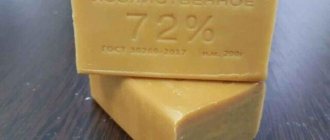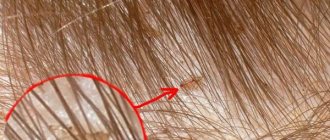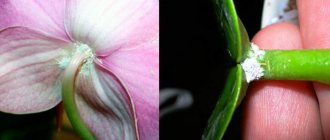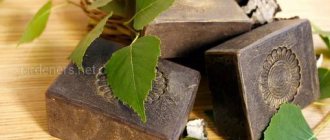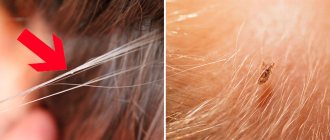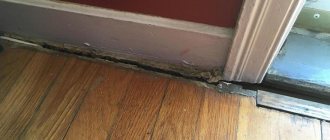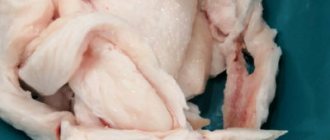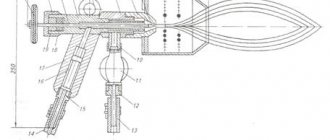Ammonia for aphids is one of the most famous and favorite remedies among farmers. Also, ammonia or ammonia is suitable as a mineral fertilizer that saturates the soil with nitrogen. And in the fight against such a pest as aphids, this is an excellent folk remedy, since for all its fertility and vitality, aphids are highly sensitive to ammonia fumes, and also when the pest gets inside, paralysis of the respiratory tract occurs and, directly, the death of the insect. It should be noted that this solution is harmless to humans.
Unlike chemical preparations for aphids, ammonia is used at any stage of plant development. But still, it is recommended to treat plants in early summer. Ammonia can be used to treat tomatoes, cucumbers, peppers, cabbage, fruit trees, raspberries, currants, viburnum, roses, indoor plants and many other crops.
Ammonia for aphids: pros and cons of using ammonia
Many farmers and gardeners use ammonia for aphids due to the following benefits:
- A sharp, pungent odor that many pests, including aphids, cannot tolerate.
- The proven effectiveness of ammonia with regular use (to combat aphids you only need 2 spraying procedures, with an interval of 14 days).
- Low cost of the product.
- Suitable as a nitrogen fertilizer.
- Safe product.
But there are also negative aspects of treating aphids with ammonia. These include:
- Inhaling ammonia vapor can make a person feel worse.
- During use, you must wear a mask or respirator.
- Excess nitrogen can lead to disruption of natural processes in plant tissues, so leaves may turn yellow.
- A short period of plant protection while the ammonia smell persists.
Why does ammonia help fight aphids?
In agriculture, ammonia is used as a fertilizer - it saturates the soil with nitrogen. Ammonia also helps in the fight against aphids due to its irritating effect: firstly, insects cannot stand its pungent smell, and secondly, if ingested, ammonia causes intoxication, paralysis and inevitable death of pests. Aphid repellents based on ammonia have a double effect: they get rid of aphids and act as a foliar nitrogen fertilizer for the leaves.
Unlike insecticides, ammonia can be used at any stage of development: during flowering, ovary, fruiting. It does not accumulate in the leaves, is quickly excreted and helps plants produce a good harvest. However, it is preferable to treat plants with ammonia in the first half of summer, when plants need nitrogen. In the second half of summer, nitrogen fertilizing is contraindicated, as it causes rapid growth, the plants do not have time to become lignified and may freeze in the winter. In addition, spraying in the first half of summer is much more timely, since aphids actively eat young leaves and shoots.
Recipes for preparing a solution of ammonia for aphids
In order not to harm fruit crops, ammonia for aphids is used in the form of a solution, with the addition of other products, such as laundry soap, liquid soap, dishwashing detergent or shampoo.
Consider recipes for preparing a solution of ammonia for aphids:
- Soap-alcohol solution. Ammonia (50 g) is dissolved in 10 liters of water, 50 g of laundry soap shavings are added and mixed thoroughly. Soap is added for better adhesion of the solution to the leaves. Use immediately after preparing the solution.
- Solution with washing powder. Dissolve 1 tbsp in an incomplete bucket of water. l. powder and 2 tbsp. l. ammonia.
- With the addition of shampoo. Dissolve 1 tsp in a bucket of water. shampoo and 2 tbsp. l. ammonia.
You need to use a solution of ammonia for aphids immediately after preparation, as the smell goes away quickly, and the remaining solution can be poured under the root of the plant as a nitrogen fertilizer. It is important to know that in order to completely get rid of aphids, you should carry out 4-5 treatments of plants over a decade, and after treatment procedures, it is better not to water the garden for several days, so as not to wash off the spray from the leaves.
Effective drugs against aphid attacks
It’s too late to use chemicals; for example, currants and gooseberries have already begun to bear berries. Every gardener and gardener has safe, but very effective ingredients on hand. Folk remedies are prepared so quickly that they are suitable for summer residents who come to the garden only on weekends.
Folk remedies can destroy all types of this pest. First, let's make a solution of ammonia and water: pour ammonia into 1 liter of water, treat all plants from bottom to top. This solution will cope perfectly with small pests, and at the same time feed the plant.
This parasite is afraid of celandine decoction:
- Take celandine and fill half the bucket with it. Be sure to wear gloves, as the plant is poisonous.
- Pour in 5 liters of hot water, let it brew for 40 minutes.
- Add 200 ml liquid soap for better adhesion.
- Pour into a spray bottle and spray all plants on which colonies of parasites are observed.
If ants appear in the garden, then the same solution can be used against ants.
A vinegar solution will help destroy aphids in the garden. To prepare it you will need 70% vinegar, as well as dishwashing detergent.
For 1 liter of water, it is enough to pour 1 teaspoon of 70%, or 8 tablespoons of 9% vinegar. You only need 5 tbsp of detergent. spoons Mix everything and spray.
Ammonia for aphids: application
Ammonia against aphids: video
Before treating aphids from the garden with ammonia, you should get rid of all anthills (to do this, you can water the anthills with muracide solution twice over the summer), remove dry branches and burn obvious areas of damage. To combat aphids with ammonia, use a watering can with a wide nozzle, since when using a spray bottle, sprayed drops of ammonia may not reach the leaves. The solution is used not only for aphid-infested plants, but also for healthy crops.
When processing, special attention is paid to the underside of the leaf, because this is where aphids hide. You need to spray on a cloudy day or in the evening. All plants can be sprayed with ammonia on grapes every 10-12 days. If the infection is small, the plants are treated every 2 weeks, and for prevention, you can get by with one procedure per month using a weak solution (10 ml of alcohol per 10 liters of water). To treat large orchards, you need to start spraying with an ammonia solution without waiting for the invasion of pests.
How to spot aphids on plants
Aphids are a malicious pest of summer cottages, orchards, and vegetable gardens. Moreover, the aphid is incredibly prolific: it can produce 50 generations per season. This parasite prefers to settle on young tender shoots to suck the juice from them. The pest is also dangerous because it releases so much poison that the leaves begin to curl and the branches begin to bend. Aphids can also carry viral diseases, which are very dangerous for all garden plantings.
Carefully examine the leaves and shoots of currants, plums, pears, and fruit bushes.
There are many types of aphids: black, red, white. The gall aphid is considered the most dangerous and prolific. If you notice any type of this parasite in your garden, begin to wage a merciless fight against it.
Gall aphids prefer all types of currants. If currant leaves are affected by brown spots, then insect colonies have already settled on the reverse side of the leaf.
The most common is the green aphid. It is capable of attacking all types of fruit trees and does not miss bushes. Chrysanthemums and roses are also her area of attack.
Should know
To use ammonia against aphids, you need to follow safety precautions:
- Due to the pungent odor, it is necessary to use a mask or respirator when working with ammonia (inhalation of ammonia fumes is dangerous for the nasal mucosa).
- To prevent the composition from getting on your skin and eyes, you need to spray wearing rubber gloves, closed-type clothing and safety glasses.
Numerous reviews from gardeners indicate the effectiveness of using such a solution of ammonia against aphids. Ammonia or ammonia is the most common remedy against aphids among gardeners and gardeners, but for greater effectiveness, additional measures and means of pest control should be taken. You can use ash. Ammonia is safe for plants and the environment, does not harm water bodies, birds and beneficial insects, and does not accumulate like nitrate in fruits. Be sure to add soap to solutions with ammonia to give them sticky properties.
What is an aphid?
Aphids are small pests with a pear-shaped body.
Appears in large quantities at the ends of pink stems in late spring - early summer.
It is difficult to immediately detect on the green parts of the plant because it blends in with them. Aphids tend to quickly increase in number: literally overnight they can grow rapidly.
Photo of the appearance of aphids
Aphids are smart insects. It knows how to hide and camouflage itself, and therefore it is not easy to detect it at the very beginning.
When it lands on roses, the leaves of the plant curl and hide the insect inside. Thus, aphids are protected from treating the plant with folk or chemical means.
Beautiful varieties of roses!
Hybrid tea rose Red Intuition Rose floribunda Freesia Rose floribunda climbing Rumba
The insect especially prefers young shoots, twigs, leaves, sprouts, and therefore they especially require protection. Shoots affected by aphids begin to dry, wither, and become covered with rust.
There is a pest with a green, slightly oblong body and brown antennae. There are mealy aphids with a white coating on the body. It affects roses growing in greenhouses. There is an indoor one with a transparent body and a size of no more than 1 mm. It is the most difficult to detect.
What are aphids and how to fight them - video
Signs of aphid damage to roses
The first sign of aphid infestation is the presence of yellow spots on roses, localized at the sites of the parasite bite.
Aphids on roses - video
Further, the following symptoms can be used to detect aphids on roses:
- a coating of sticky consistency appears on the surface of the rose leaf plate, and the shoots themselves no longer shine as in a healthy state, dust and dirt accumulate;
- shoots grow more slowly, their shape is disrupted;
- rose buds droop and do not bloom, shedding occurs.
It is impossible not to notice the defeat of aphids. However, the sooner it is detected, the better.
Pests in the garden!
How to get rid of wireworms Effective ways to deal with mole crickets
Mechanical method of eliminating aphids
To eliminate aphids, you can simply wash them off with a stream of water. This makes sense when the parasite is detected almost immediately and when its quantity is small. You can remove insects by hand by walking along the stems in the direction in which the flower grows.
The process is carried out very carefully and carefully to preserve the buds and branches intact and undamaged.
Photo of the mechanical method of eliminating aphids
Life cycle of black aphid
In order to get rid of parasitic insects, you need to know the peculiarities of their wintering and reproduction. Then the control measures taken will be as effective as possible.
Aphids are extremely prolific. Females lay eggs on the bark near the buds, several hundred thousand at a time, and all newly hatched individuals are ready to reproduce. Until August they feed and grow, closer to autumn they begin to move in search of new food sources, and towards the end of September they lay eggs. In early spring, these eggs hatch into larvae that feed on leaf sap.
Since young aphids do not have wings, they cannot move long distances on their own, and black ants become their carriers. If you find an anthill near the bushes, destroy it immediately: pour boiling water on it or sprinkle with slaked lime.
It is important to get rid of black aphids immediately after detecting individuals on the stems or bark of viburnum. It is best to treat the bushes in early spring - it will be much more difficult to destroy thousands of bugs that will have time to appear in a few months and will be able to migrate to other trees.
Reviews from gardeners who destroyed aphids using folk remedies in their garden plots
Alena, 34 years old
I started growing vegetables myself when I had children. Naturally, I try without chemicals. It’s clear how to overcome beetles, slugs, and goose, we just collect them. But aphids. How did she get it? I used to buy chemicals at the store, but this year I decided to conduct an experiment first. I googled a bunch of recipes. I chose a few. I was able to wash it off with water, but the problem was that wherever the hose reached, I washed it off. And the garden is big. I tried a lot of things. In my opinion, soap solutions work well. I didn’t notice much difference in what to add. The main thing is soapy. Saved cucumbers with ashes. Good too.
Vladimir, 58 years old
We are adherents of healthy eating. What's the point of hunkering down in your city and treating it with chemicals if the same chemical stuff, but easier and cheaper, is available in the store. I already have my own methods for everything. I will share a recipe for aphids. Just dilute vinegar in water, about a tablespoon per liter. Spray or wash the leaves with this solution. Helps 100 points.
Maxim, 37 years old
My wife and I bought a dacha so that we could get away from the dust in the summer. They planted raspberries, currants, cherries, and apple trees. Its fresh. And then we arrive, and it’s all covered in insects. It turned out to be an aphid. We didn’t take anything with us; we were traveling for the weekend. And the next time, in a month, they could break out and devour everything. We started googling what available means would help. From what we had with us, we recommended cola and mustard. Well, we doused some with cola as best we could, and covered some with mustard powder. Before this, everything was washed with water. Not all the aphids were caught. But it has become much smaller.
